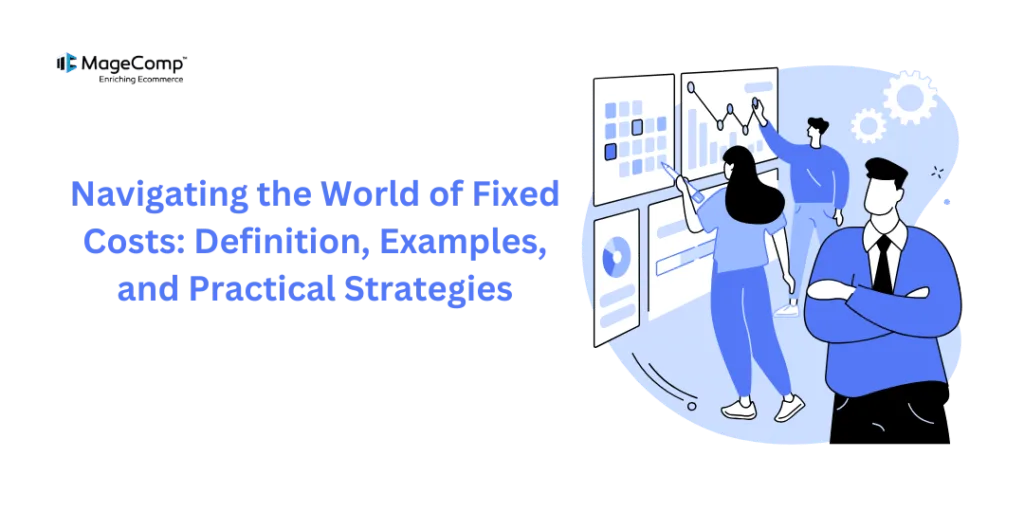In the realm of financial management, understanding fixed costs is akin to navigating through familiar yet intricate terrain. Fixed costs, as the name suggests, are those expenses that remain constant regardless of fluctuations in production or sales volume. While these costs may seem immovable, comprehending their significance and strategizing around them can profoundly impact a business’s bottom line. In this blog post, we’ll delve into the definition of fixed costs, explore examples across various industries, and discuss practical strategies for managing them effectively.
What Are Fixed Costs?
Fixed costs represent the backbone of a business’s expenditure structure, providing a stable foundation upon which operational decisions are made. Unlike variable costs, which fluctuate with changes in production levels, fixed costs remain unchanged within a certain range of activity. These expenses persist irrespective of whether a company produces one unit or a thousand, making them essential components of the cost structure.
Understanding fixed costs is crucial for businesses as they form the basis for break-even analysis, pricing strategies, and budgeting decisions. Moreover, effectively managing fixed costs can enhance a company’s financial stability and resilience in the face of economic uncertainties.
Examples of Fixed Costs
Here are some common examples of fixed costs across various industries:
- Rent and Lease Payments: Monthly rental or lease expenses for office space, manufacturing facilities, or equipment are typical fixed costs. Whether a company produces one unit or a thousand, the rent remains the same.
- Salaries and Benefits: Base salaries, employee benefits, and insurance premiums often remain constant regardless of productivity levels.
- Utilities: Utilities such as electricity, water, and internet services may have fixed components within their billing structure. While usage may fluctuate, the basic service fees remain constant.
- Depreciation: Depreciation of assets, such as machinery and equipment, is often considered a fixed cost spread over the asset’s useful life. Even if the equipment is not actively used, depreciation expenses persist.
- Insurance Premiums: Business insurance premiums, including property insurance, liability insurance, and workers’ compensation insurance, are typically paid on a fixed schedule, regardless of business activity.
- Loan Payments: Fixed monthly loan payments, such as those for mortgages, vehicle loans, or equipment financing, represent another common fixed cost for businesses.
- Subscription Services: Costs associated with subscription-based services, such as software licenses, cloud storage, or professional memberships, are typically fixed regardless of usage.
- Property Taxes: Property taxes on owned real estate or business property are typically fixed costs that must be paid annually or semi-annually, regardless of business activity.
- Advertising and Marketing: Some advertising and marketing expenses, such as annual contracts with advertising agencies or fixed fees for maintaining a company website, may be considered fixed costs.
- Administrative Expenses: Administrative costs, including office supplies, software subscriptions, and professional fees for legal or accounting services, often remain constant regardless of production levels.
Practical Strategies for Managing Fixed Costs
By proactively managing fixed costs, businesses can improve profitability, enhance cash flow, and better withstand economic fluctuations. While fixed costs may seem rigid, there are several strategies businesses can employ to optimize their impact on overall financial health:
- Negotiate Lease Agreements: When entering into lease agreements for office space or equipment, negotiate favorable terms such as rent reductions or flexible lease periods.
- Outsource Non-Core Functions: Consider outsourcing non-core functions such as IT support, payroll processing, or customer service to reduce fixed labor costs. Outsourcing can help reduce fixed labor costs by eliminating the need for full-time employees and associated benefits.
- Implement Energy-Saving Measures: Invest in energy-efficient technologies and practices to lower fixed utility costs over the long term. Implement energy-saving measures such as installing energy-efficient lighting, HVAC systems, and appliances. Conduct regular energy audits to identify areas for improvement and encourage employees to adopt energy-conscious behaviors.
- Lease or Rent Equipment: Instead of purchasing expensive equipment outright, explore leasing or rental options to spread out costs and avoid large upfront expenditures.
- Regular Review of Insurance Policies: Periodically review insurance policies to ensure adequate coverage at competitive rates, potentially reducing fixed insurance premiums.
- Utilize Co-working Spaces: For startups or small businesses, opting for co-working spaces can provide flexibility in office space arrangements and minimize fixed rental costs.
- Implement Remote Work Policies: Embrace remote work arrangements to reduce the need for large office spaces and associated fixed overhead costs. Remote work can also improve employee satisfaction and productivity.
- Invest in Asset Maintenance: Regular maintenance and upkeep of assets can prolong their useful life, spreading out depreciation costs over a longer period. Implement a proactive maintenance schedule to prolong the lifespan of equipment and minimize repair costs. Keep detailed records of asset usage and performance to identify opportunities for optimization or replacement.
- Cross-Training and Multitasking: Cross-train employees to perform multiple roles and tasks within the organization. This flexibility can help optimize labor resources and reduce the need for additional staffing, thereby lowering fixed labor costs.
- Forecasting and Budgeting: Develop accurate financial forecasts and budgets to anticipate future fixed costs and plan accordingly. Regularly review and adjust budgets based on changing market conditions, business performance, and strategic objectives.
Wrapping Up
Navigating the world of fixed costs requires a blend of strategic foresight, financial acumen, and operational agility. While these expenses may appear inflexible at first glance, businesses that understand their nuances and implement practical strategies can effectively manage fixed costs to their advantage. By optimizing expenditure structures, negotiating favorable terms, and embracing innovative solutions, organizations can position themselves for sustained growth and success in today’s dynamic business landscape.
